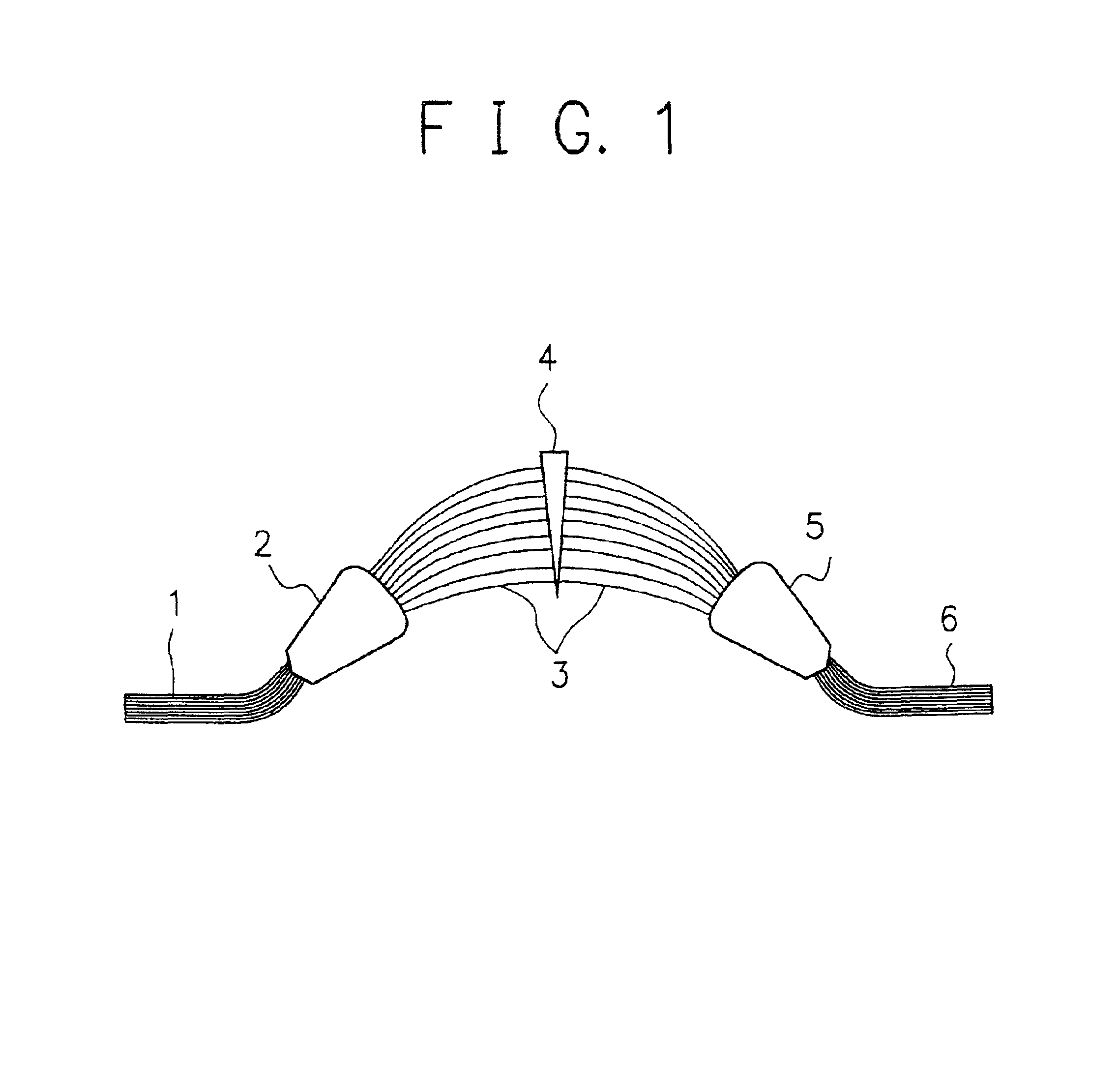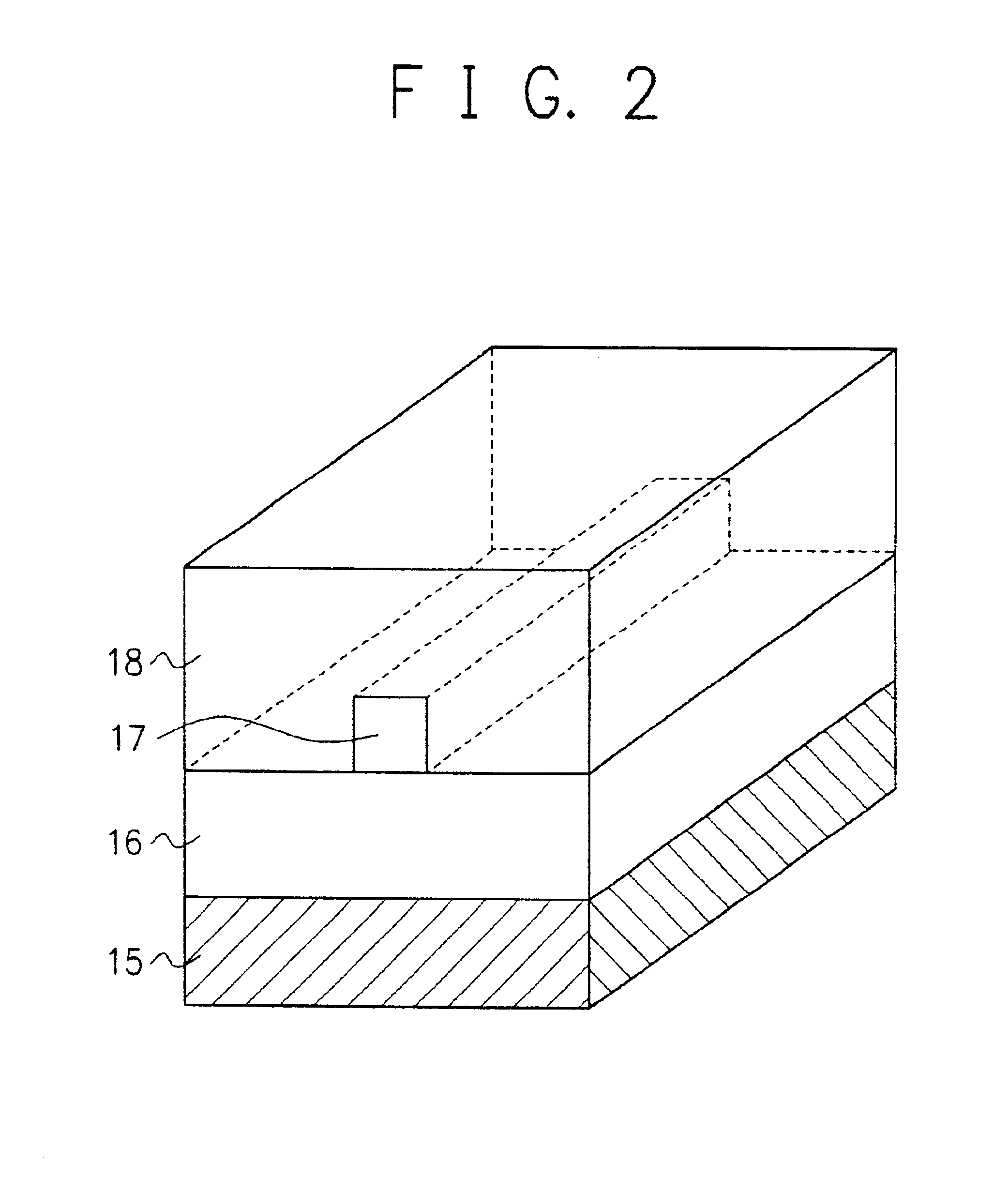Temperature-independent arrayed waveguide grating device
a technology of arrayed waveguides and gratings, which is applied in the direction of optical waveguide light guides, instruments, optics, etc., can solve the problems of reducing the reliability of the overall system, increasing the system cost and the size of the device, and reducing the excess loss due to the groove inserted in the arrayed waveguide section of the arrayed waveguide grating. , to achieve the effect of reducing the loss and minimizing the loss
- Summary
- Abstract
- Description
- Claims
- Application Information
AI Technical Summary
Benefits of technology
Problems solved by technology
Method used
Image
Examples
first embodiment
FIG. 3 shows a magnified view of an arrayed waveguide section of an arrayed waveguide grating in accordance with the present invention. The configuration of FIG. 3 includes arrayed waveguides (silica-based waveguides) 19, a wedge-shaped groove 20 formed in the waveguide section 19 to reach the substrate material 15 (i.e., the upper clad layer 18, the core region 17, and the lower clad layer 17 are accordingly removed), and photosensitive polymer 21 and 22 (having a negative refractive index temperature coefficient) filled in the groove 20.
When photosensitive polymer is filled in the groove 20, between the regions 21 and 22 they have no boundary, namely, they are equal to each other. In an operation to radiate a light beam onto the polymer to increase the value of refractive index, the region 22 has a high value of refractive index as a result. Conversely, in an operation to radiate a light beam onto the polymer to reduce the value of refractive index, the region 21 has a low value o...
second embodiment
FIG. 5 shows, in a magnified view, the arrayed waveguide section of the arrayed waveguide grating in accordance with the present invention. The configuration of FIG. 5 includes arrayed waveguide section 19 (including silica-based waveguides), a wedge-shaped groove 20 formed in the waveguide section 19 to reach a substrate, and polymer 38 filled in the groove 20, the polymer having a large value of refractive index and a negative refractive index temperature coefficient.
When light propagating through an optical waveguide enters a uniform medium, the light spreads as the light propagates therethrough if the medium does not include structure to confine the light.
Assume that the uniform medium has a refractive index of n, the propagating light has a spot size of w (the spot size is 1 / e at half-width (1 / e2 at half-width of power distribution) from a peak value when an electric-field distribution in a guided mode is fitted using Gaussian distribution), and a propagation constant of k (=2π...
PUM
 Login to View More
Login to View More Abstract
Description
Claims
Application Information
 Login to View More
Login to View More - R&D
- Intellectual Property
- Life Sciences
- Materials
- Tech Scout
- Unparalleled Data Quality
- Higher Quality Content
- 60% Fewer Hallucinations
Browse by: Latest US Patents, China's latest patents, Technical Efficacy Thesaurus, Application Domain, Technology Topic, Popular Technical Reports.
© 2025 PatSnap. All rights reserved.Legal|Privacy policy|Modern Slavery Act Transparency Statement|Sitemap|About US| Contact US: help@patsnap.com



